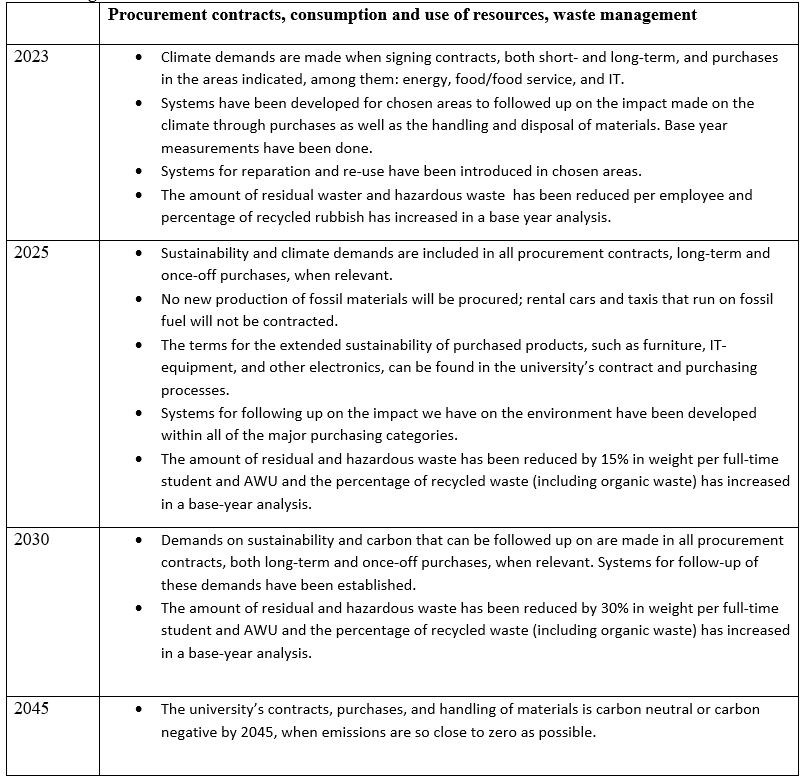Consumption and circular material flow
Consumption of products and services makes up a large part of the university’s impact on the climate.
Reducing our carbon footprint requires a transition to a circular approach to procurement and the handling of materials, in collaboration with the surrounding community.
Objective: The university’s procurement contracts, purchases and handling of materials will be carbon neutral or carbon negative by 2045, with emissions so close to zero as possible.
This objective is achieved through making climate demands when signing procurement contracts and when making purchases, handling materials we have purchased with climate in mind, and re-using and recycling them after they have served their purpose.
- Climate demands are made when signing procurement contracts and making purchases based on a product’s life cycle from production, transportation, use, and disposal.
Support for making climate and sustainability demands when signing procurement contracts needs to be developed so that it is easy for a purchaser to make climate and sustainability demands when signing contracts both for once-off purchases and for future contracted ones. It is furthermore important to establish a routine for following up on climate and sustainability demands that serve as the basis for dialogue with suppliers and for future procurement contracts.
- Systems for measuring the impact on the climate caused by our consumption will be developed in chosen areas. Collaboration within the higher education sector will be pursued. It is important to find simple models so that the measuring process does not become more important than what we are doing. Competence in carbon dioxide budgeting and carbon dioxide follow-up needs to be built up at our university and built into the system that supports decision-making.
- The university’s handling of materials will be circular and based on a circular life cycle perspective.
This is done by signing contracts for fossil-free materials that can be re-used, avoiding single-use materials, increasing the lifespan of materials and products that are used, establishing systems for re-use and optimizing existing systems for recycling. Systems and information about procurement contracts, re-use and waste management need to be designed so that they make it easier for employees and students to take personal responsibility and act in a sustainable manner.

Contact



